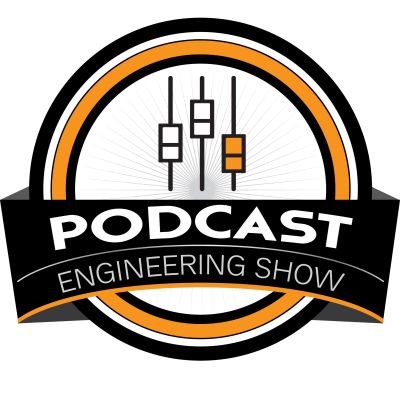This show focuses on the technical production of audio podcasts. Chris Curran chats with podcasters about their audio equipment, software and workflow to help you learn how to produce better sounding podcasts. You’ll also learn solutions to common audio issues as well as plenty of tips and tricks. By listening to this show you will gain a TON of knowledge and skills that will make a HUGE difference in your sound quality _and_ save you time! Subscribe/Follow today and start listening! Your host Chris Curran has a background in podcast production (Forbes, Dun & Bradstreet, J&J, etc) as well as music production (Sarah McLachlan, Jeff Buckley, Foreigner, etc). When he entered podcasting in 2012, he noticed that most podcasters (and producers) do not have a good understanding of fundamental audio engineering concepts, which sabotages the quality of their sound from the very beginning. This show, as well as Podcast Engineering School, helps podcasters and producers reach professional levels of podcast audio production.
https://podcastengineeringschool.com/category/show/
episode 238: 238: How To Handle Loudness Properly in All Stages of Your Podcast Production Workflow
NOTE: In this episode I’m using a Sennheiser e835 microphone into my Portico 2 channel strip and using these plugins in post: KIT BB N105, Shadow Hills Class A Mastering Compressor, Saturn 2, and Aquamarine 4.
Here's the summary of what I discuss on How To Handle Loudness Properly in All Stages of Your Podcast Production Workflow:
- Record all raw tracks at a healthy level (not too low or too hot)
- Set all raw tracks to the same LUFS before bringing them into your DAW. (I do this at the end of my cleanup phase after I remove background noise, plosives, hums, and other blemishes)
- Use Compression and/or MaxxVolume/Vocal Rider to compress/tame the loud parts as well as boost the lower volume parts. (NOTE: This step will effectively amplify any background noise, so be sure to absolutely minimize the background noise before pressing record!)
- Adjust the overall level of each participant so they all sound good compared to each other. (as part of your mixing phase, where you can also use other processing like EQ, saturation, etc.)
- After rendering the final episode audio, process this file so it adheres to the “unofficial” loudness standards of podcasting: -19 LUFS for mono episodes, or -16 LUFS for stereo episodes.
Other Notes:
- If you ever have questions please reach out!
- You can sign up to receive Daily Goody’s in your email a few times per week or a weekly roundup. Sign up here.
- The start date for the next PES semester is January 10, 2023! (fyi, the course is delivered once per quarter)
- If you’d like to share this show with any of your podcaster friends, feel free to send them a message saying, “Btw, here’s a show about podcast audio production you may find helpful” with this link: https://podcastengineeringschool.com/subscribe/)
Let me know if you have any questions or need any help with anything,
~Chris
